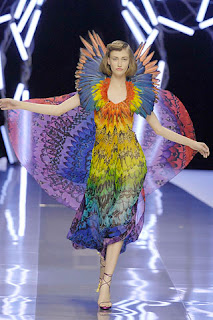In the fashion world, Alexander McQueen is well known for creating shocking and challenging ideas. His creation moved the fashion forward and influenced many fashion designers in the new generation.
Born in London in 1969, he was the youngest in a family of six children whose father was a taxi driver and mother was a social science teacher. The fact that McQueen was openly gay made him live a difficult life in early years when he was an ‘outsider’ at school and even at his own home. Having suffered from ignorance and tease of others, his mother was the only source of support that he could turn to. With her encouragement, McQueen escaped the reality into his own world where his wild creativity was devoted only for fashion.
In 1985, McQueen left school at 16 and undertook an apprenticeship at Savile Row tailors. It was this experience that later laid down the foundation for his skills and expertises. Subsequently, his mastery in six methods of cutting was truly enhanced while working at theatrical costumiers Angels and Bermans. He explored a new approach in cutting by transforming the sixteenth-Century style to the distinctive ‘sharp’ cut that later became his signature technique. He then went to finetune his design skills with Koji Tatsuno and Romeo Gigli. Finally he completed an MA at Central St Martins College of Art and Design, where his graduate collection caught the eye of the influential fashion insider Isabella Blow who helped him launch his fashion career.
His philosophy was unique in which he believed that his personal inspiration was originated from daily life experiences, the street, art galleries and in the past; but not be influenced by others’ work.
I find Alexander McQueen very inspirational because of his ability to push the fashion boundary and to challenge what is possible. The concepts of fashion, surreal, nature and extreme beauty were portrayed through his intricate narratives and bold imagery. I share the same interest with McQueen in the notion of extreme beauty and the embodiment of the past. In a similar approach, I would want to translate my own interpretation of the corset image and other details in a modern way.
















































